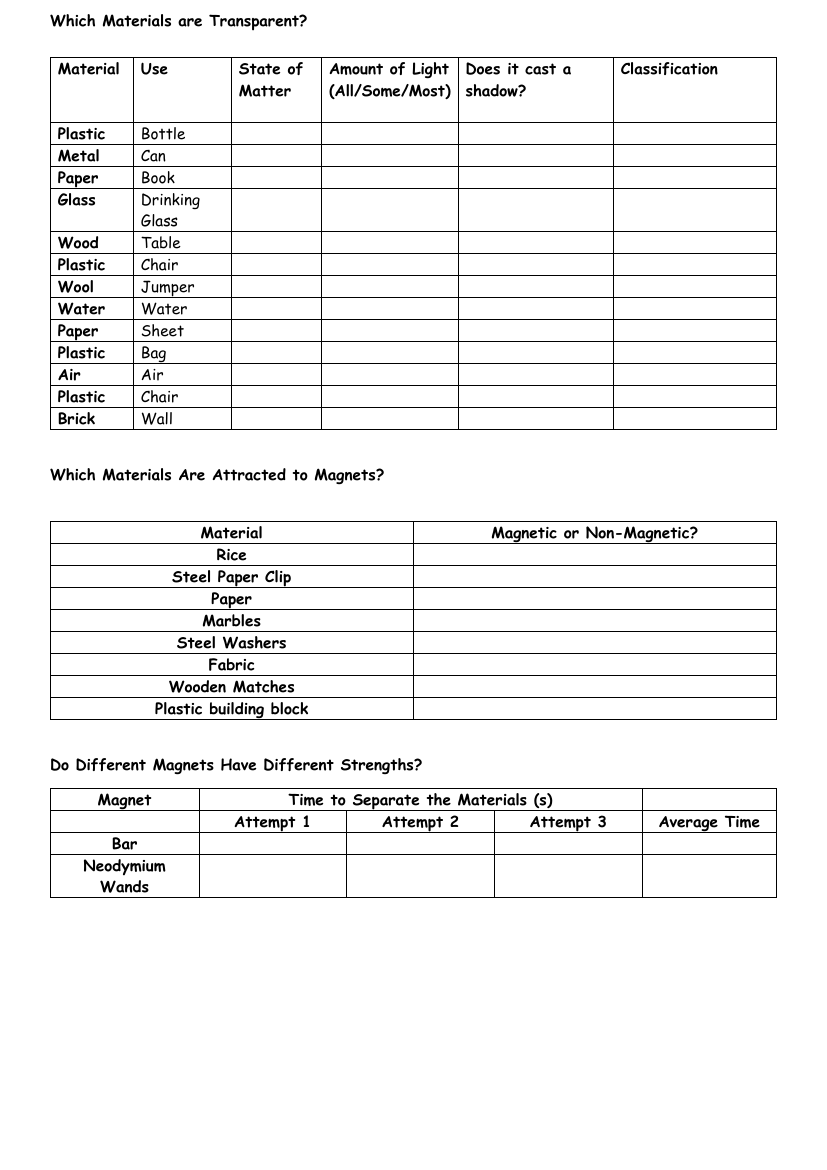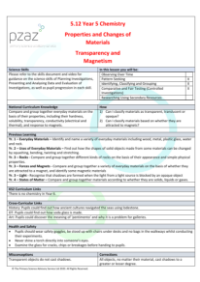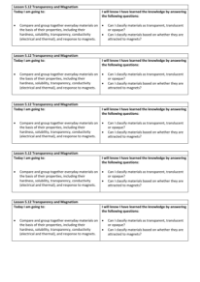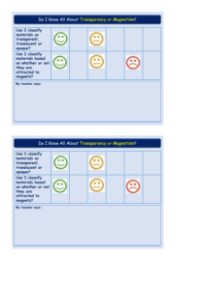Transparency and Magnetism - Results Tables

Science Resource Description
Investigating the properties of different materials, two key experiments are conducted. The first determines which materials are transparent by observing the amount of light they allow through and whether they cast a shadow. Common items such as a plastic bottle, metal can, and glass drinking glass are assessed for their transparency and classified accordingly. The second experiment explores magnetism, categorising materials like rice, steel paper clips, and plastic building blocks as either magnetic or non-magnetic. This helps to identify which materials are attracted to magnets, an essential concept in understanding the basics of magnetism.
Additionally, the experiments probe into the varying strengths of different types of magnets, including bar magnets, neodymium magnets, and wands. By measuring the time taken to separate materials from these magnets over several attempts, an average time is calculated, illustrating the relative strength of each magnet. The experiments provide insightful data on material properties, such as state of matter, light penetration, and magnetic attraction, offering a comprehensive learning experience about transparency and magnetism.






